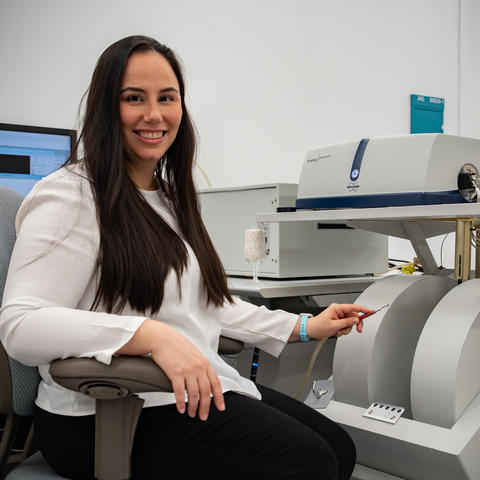Spotlight: Research Chemist Ileana Pazos’ Radiant Role in Longer-Lasting, Safer Imported Foods

Gamma rays and delicious mangos — fruits and vegetables brought in from outside the country first require health and foodborne pathogen inspections. NIST research chemist Ileana Pazos helps the process move safely along with her radiation expertise.
For some imported produce, the U.S. uses food irradiation. Also called cold pasteurization, it’s the process of applying radiation or energy to a food product. The resulting irradiated food has improved safety and an extended shelf life as well as no radiation residue on it, and the radiation does not compromise the nutritional quality. That means radiation can make food safe to eat (and even last longer).
But for food irradiation to work safely, we need precise measurements of the absorbed radiation dose, all traceable to the International System of Units (aka the metric system). That’s where Ileana comes in.
At NIST, Ileana tests the accuracy of the dosimeters — devices that determine the amount of radiation absorbed from gamma rays — that industry leaders use in their own facilities. She also sends NIST’s own dosimeters out to companies so that they can calibrate the dose delivered by their machines.
As it turns out, Ileana isn’t the only one in her family whose work at NIST has dealt with internationally traded goods.
Her mother, Ileana Martinez, worked at NIST for many years. She served as the standards representative at the U.S. Embassies in Argentina and Brazil, under a memorandum of understanding between NIST and the Department of Commerce’s International Trade Administration. In this role, her mother worked closely with metrology institutes in South America and provided technical support to the U.S. ambassadors and commercial counselors. The program aided U.S. companies in overcoming standards-related barriers to trade.
Ileana grew up already knowing about NIST because of her mother’s work and joined our Summer Undergraduate Research Fellowship program, designed to inspire college students to pursue careers in STEM. As a postdoctoral researcher at the University of Maryland, she also collaborated with NIST and later joined our workforce.
The mother-daughter duo just missed each other’s paths. Ileana started at NIST right after her mother retired. But it seems the work in standards runs in the family, and that’s something we (and our imported goods) can get behind.
Follow us on social media for more like this from all across NIST!

